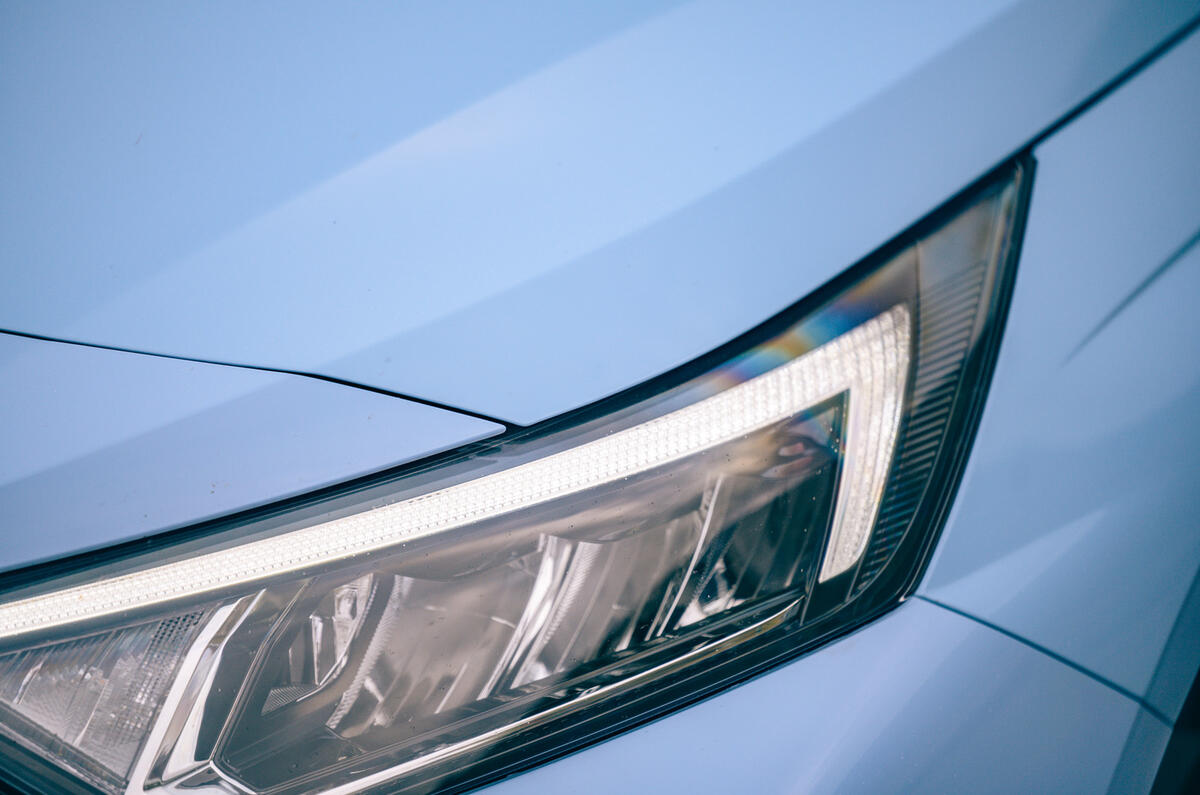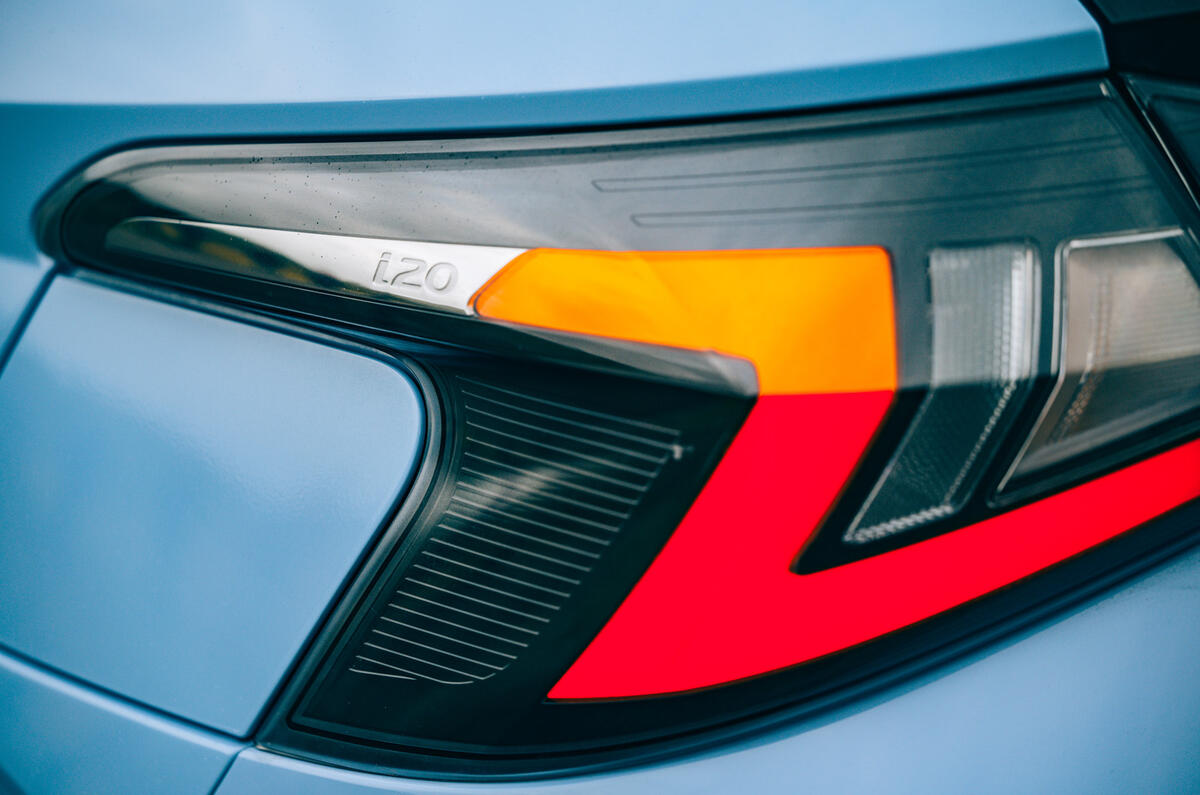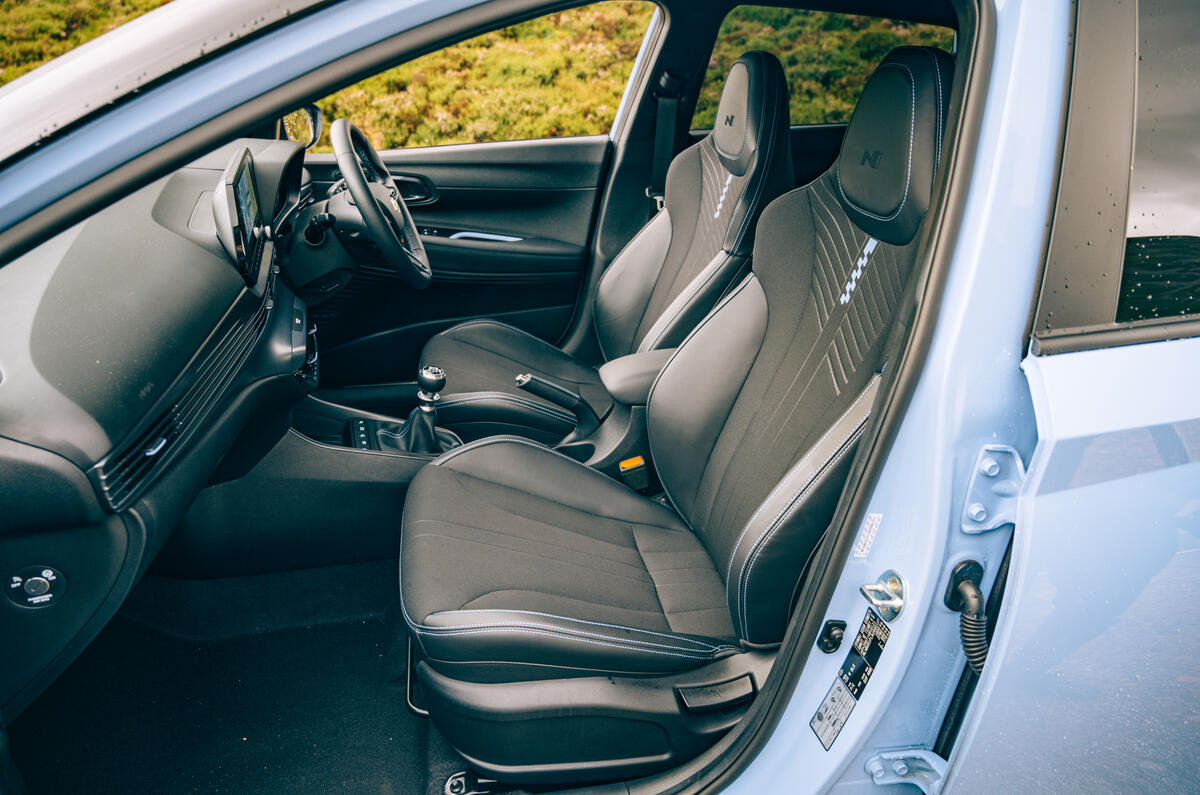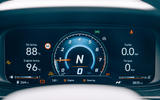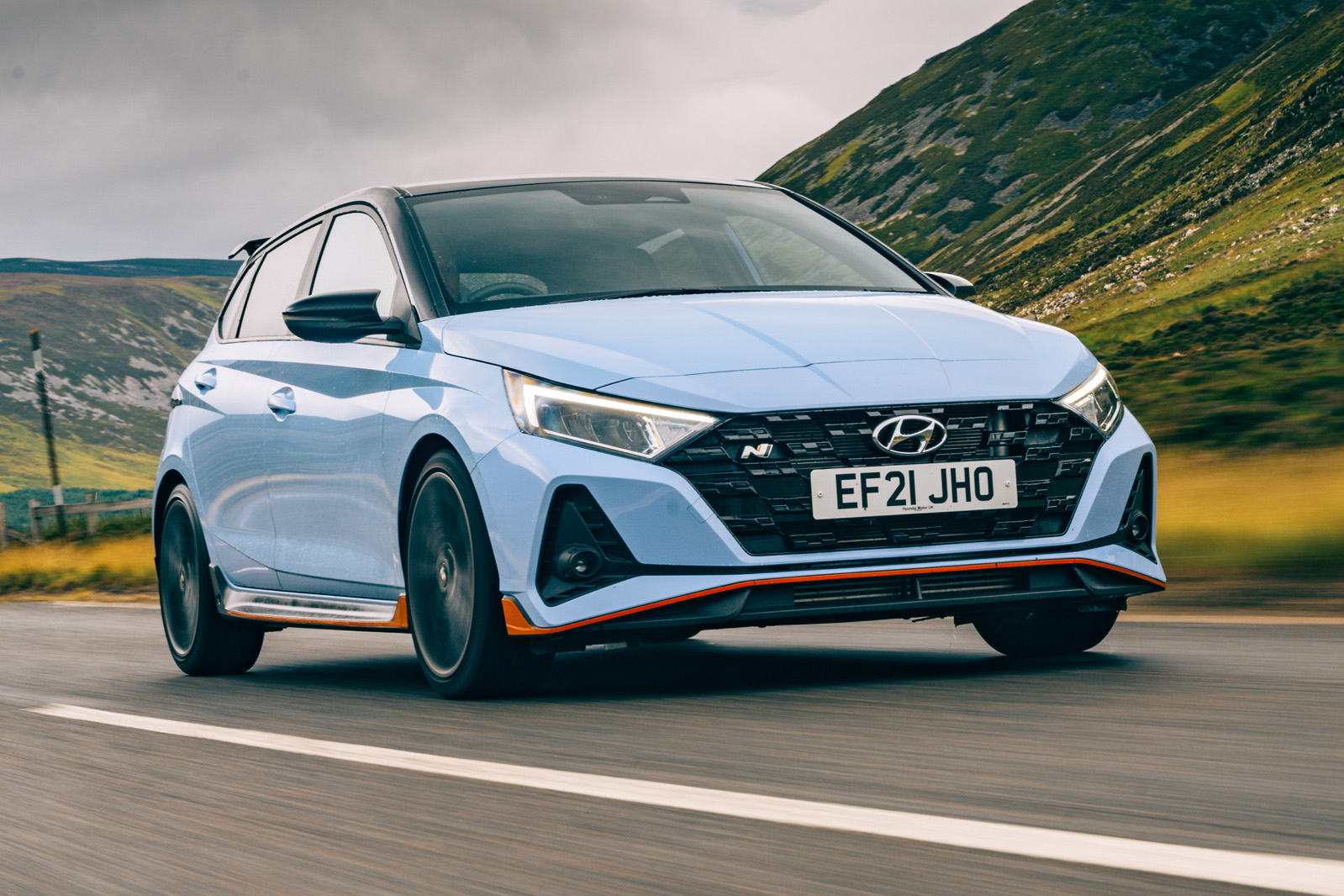That said, rewards are there if you’re prepared to delve deep enough. A mechanical limited-slip differential that operates far more naturally and predictably than the e-LSD in the larger Hyundai i30 N is endlessly effective and neat in keeping the nose on line, and the car’s general stability allows it to be pitched into bends aggressively, whereupon the rear axle quickly loads up and smudges the tyres across the road in a satisfying manner imperceptible to all but the driver.
There’s real dynamic polish here, and a fine all-weather, any- environment performance car, but we wonder whether the character of the i20 N is more senior hot hatch and less feisty supermini.
The Hyundai i20 N on track
Owners might find that it’s worth signing up for the odd track day with their i20 N. In many ways, this car really comes alive in its handling when you remove the constraints of the public road and can push what is an exceptionally composed chassis right up to and over the limit of adhesion.
Still, that takes some doing, even on Millbrook’s Hill Route. Pirelli P Zero tyres offer up plenty of grip against the i20 N’s relatively low kerb weight, and the quality of the high-speed damping gives the car’s back axle very good composure.
Rather than lurid lift-off oversteer, the Hyundai instead rewards the confident driver who is willing to punt the car’s centre of gravity forward on turn-in into medium-speed corners before quickly getting back on the throttle. The car then indulges you in neat four-wheel slides before the limited-slip diff straightens things out. It’s all very satisfying, and the i20 N’s braking holds up well on track, too.
Comfort and isolation
Nobody expects superminis – especially single-minded ones – to muster much in the way of opulence, but the i20 N might surprise one or two people with its air of ease and composure when you just want to get from A to B.
Granted, it feels stiff about town, but which car of this ilk doesn’t? (The Volkswagen Polo GTI is disqualified, because it simply cannot match the excitement of the Hyundai.) What’s rather more surprising is how at home this car is on the motorway, where beyond a reasonable degree of road roar, it will sit in relaxed fashion all day long. One tester drove the 400 miles from Aviemore to Birmingham and arrived without any reasonable criticism to make of the Hyundai.
It proved comfortable and swift and lacked nothing in terms of amenities. However, it is absolutely true that larger hot hatches are better suited to long journeys, mostly because of their more natural driving positions.
The bottom line is that, despite its pugnacious looks, the i20 N would be very easy to live with and use on a daily basis. It is uncompromising at times, but anybody embarking on ownership with their eyes open and an understanding of the trade- offs necessary to achieve such startling ability on quick roads will experience no unpleasant surprises with this car.




